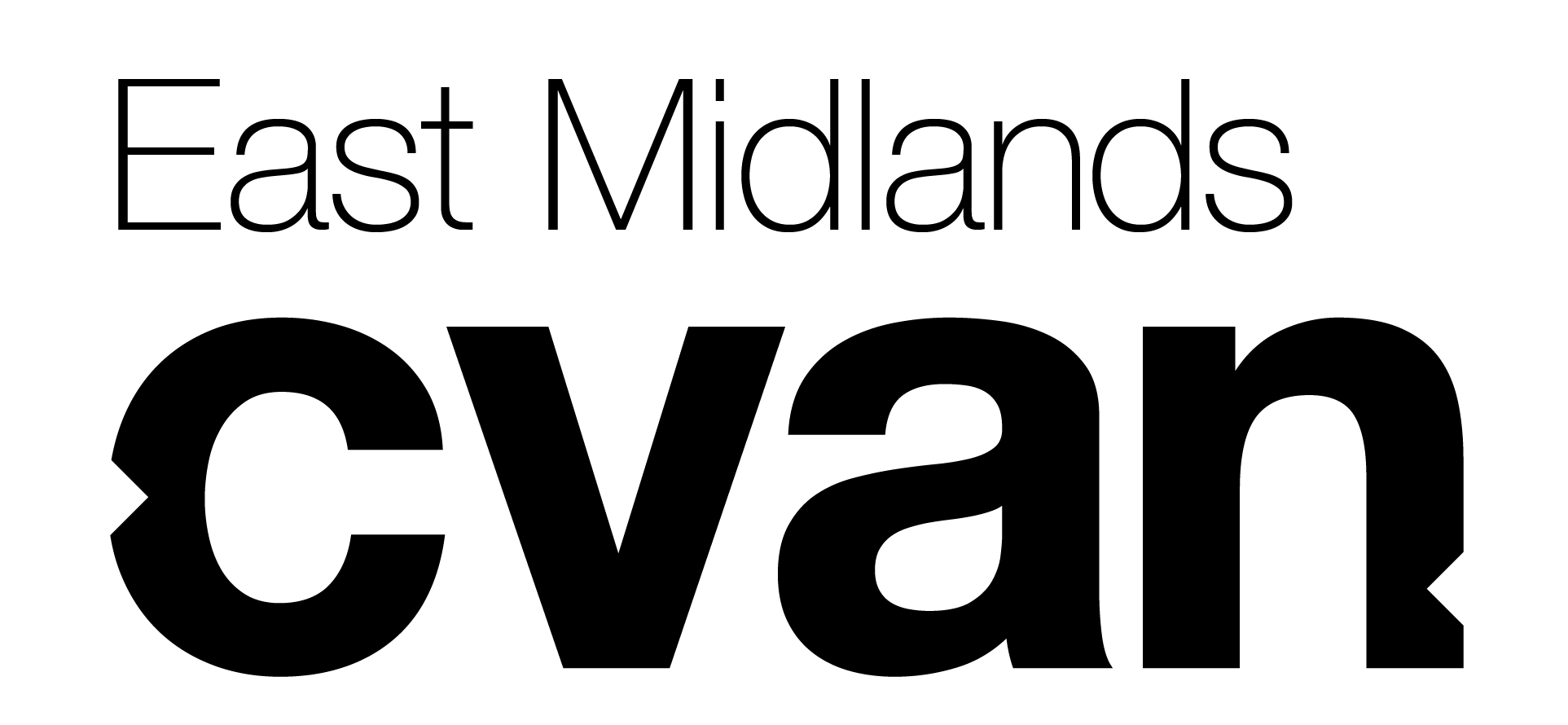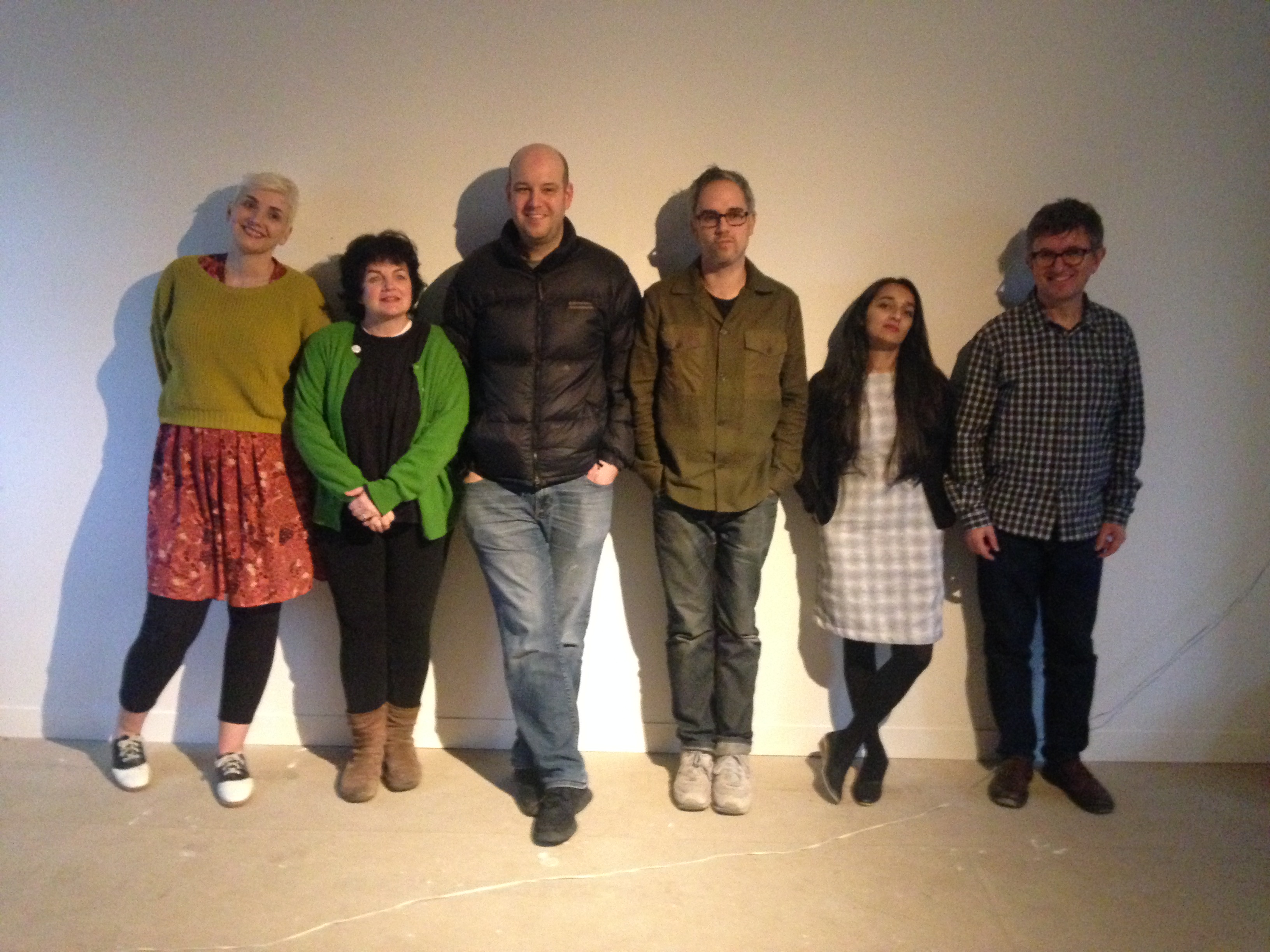We recently commissioned artist and writer Tom Hackett to write a piece about Document, looking at it as a project, on its genesis, on the six artists, and critically, on its taking place in the East Midlands. Here are his thoughts:
‘Document’ a look at six artists based in the East Midlands (a 3 year project by CVAN EM)
My adoptive artistic region of the East Midlands is a curious entity. Countries have capitals, counties a shire town and conurbations an economic rationale. History, geography, industry and trade combine to shape and form their sense of place. Things get trickier to define when it comes to the administratively magicked regions of England. Indeed some conjure more of a picture than others, say Yorkshire and Humberside or the North East. Even with its very own designated airport, the East Midlands feels a bit fragmented in terms of its constituent parts. It is however, home to an impressive amount of artists per capita, including myself and there is more than a scattering of good ones.
How then does one celebrate and profile a region’s artistic wealth beyond its boundaries? You can’t simply nominate a handful of artists and whisk them down to London for a ‘best of’ showcase. Such a ‘spotlight’ approach can even exacerbate the provincial paradox, in effect highlighting ‘unhelpful’ perceptions of outsider-dom. Akin if you like, to taking a ‘local shop for local people’ and parachuting it into Oxford Street. And importantly, many regionally based artists already enjoy national and international recognition already. The artistic ‘bigging up’ of a region, is an altogether more challenging prospect, particularly when the brand itself is somewhat disparate by definition.
This is where an organisation like ‘Contemporary Visual Arts Network East Midlands’ come in. In a three year programme ‘Document’ it has been weaving a more complex tapestry to reflect a range of geographically spread and artistically diverse strategies to celebrate the visual arts ecology of the region. ‘Document’ follows six East Midlands-based artists: Andrew Bracey; Geoff Diego Litherland; Jessica Harby; Kajal Nisha Patel; Tim Shore and Tracey Kershaw to capture their activities and experiences over the life of the project. As part of ‘Document’ it has engaged Bill Newsinger, filmmaker to record their three year journey. The six were chosen from open submission, for geographic distribution and creative variety and artistic quality, by a panel comprising Gordon Dalton, Kerry Harker and Deborah Robinson – chosen, not curated.
This notion of selection due to artistic quality is particularly of significance for us as artists. External validation from within the industry is essential to sustaining us on our creative journeys. Anyone who has been practicing a while is likely to acknowledge that being profiled by others and others of position in the art world, is both individually affirming and of value. Validation quite simply put, creates belief. And the art world is built upon the very premise of belief.
As artists, we rarely end up living where we were born, we are a migrant species, almost by definition. These six are no exception to the rule. Andrew Bracey started his art education in Plymouth before meandering a circuitous route to teaching at University of Lincoln. Jessica Harby heralds from Oak Lawn, Illinois, studying in Chicago before trading it for Northampton. Geoff Diego Litherland started life in Mexico and ended up in Wirksworth, Derbyshire via Bolivia and Ecuador amongst other places. Tim Shore studied at Wolverhampton and The Royal College before moving to Derby to teach. Kajal Nisha Patel Studied in Sheffield, is based in Leicester and works between India and the UK. Tracy Kershaw started life in Newport, Wales and arrived in Nottingham via Turkey and the Solomon Islands. Working in the provinces? Yes. Provincial in perspective? Resolutely no.
Let’s start with the work of Tracey Kershaw. Her work explores everyday motherhood through documenting the unsung simple actions of childcare, like cutting fingernails, or drying feet. Kershaw captures poignant parental tenderness, whist presenting a gentle vignette of the tired isolation and subjugation of self, that childcare gives us. Birth and death are ‘the’ big issues in terms of our transient lives. And parenting shifts the artist from the realm of the selfish to the selfless. This nod to displacement is core to Kershaw’s work. The notion of origins and geographic dislocation from native Wales is explored via the delightful piece ‘17 Welsh dolls’. In which a bell jar is rammed tight with squashed national dolls. playfully referencing the false touristic construct that is National identity. In ‘That is my mother’ collected domestic photos of other people’s mothers are printed onto large discs that form an enigmatic wall installation. The colour palette is that of the 1970s machine print. A kitchen sink aesthetic runs through much of Kershaw’s work and frames her as a contemporary social realist, artfully shedding light on the everyday and ordinary. Too often in our event based culture, ordinariness can falsely read as emptiness, when arguably it is the very glue that connects humanity. This truth is the touchstone of Kershaw’s work.
Any serious contemporary artist gives more than a cursory nod to considering their critical location and place within the wider subject and also their place within the continuum of art history and the changing world itself. Andrew Bracey explores the subject of painting as a kind of inquisition rather than as a medium to create an object. He is also committed to interrupting and subverting existing images and surfaces. In his series ‘Transitory Paintings’ meticulous abstract angular paper cuts, joyously subvert found reproduction catalogue images of gilt framed paintings. These include William Russell Flint’s pre Raphaelite-esque work and Joshua Reynolds’ ‘Grand Style’. This fascination with both adapting and examining the past is a continuing thread in Bracey’s work. His contribution to the engaging ‘Bummock’ show at Backlit, saw him re-configure vintage lace designs into what appeared at first sight to be loose gestural abstraction, artfully morphing the delicate patterns into marks suggestive of 1950s expressive art. This work visually entices the viewer, then springs another reference or level of meaning on them. Importantly, it does so in a warm uplifting non patronising manner. He sceptically appropriates, but carefully avoids the pitfall of producing art couched in overt cynicism or irony.
Geoff Diego Litherland is also an artist who probes the place and function of painting past and present. Tackling notions of truth and fiction in image-making to boot, he creates an intriguing stylistic hybrid through the works he generates. He is clearly an artist who loves to paint and does this with efficacy, embracing an illustrative aesthetic, which variously connotes the mystical and other worldly. The pictures draw you in with an offer of narrative, but resist evident closure of meaning. He adds to this matrix of possibility with carefully considered titles like ‘Through the stars walk backwards’ and ‘We can never be born enough’. These take you somewhere strange, then abandon you to speculation. Small human forms, either walking, standing or occasionally riding donkeys, are neatly painted in a Goya-esque style. They appear to be traveling or trapped inside some kind of quasi Narnian landscape. The surrounding grounds are painted in a much looser, faded style – redolent at times of under paintings or old masters sketches. These images take one into a lost imaginary otherness or fantastical void. They make you feel small in the same way star- gazing does. A comforting reminder of how insignificant and subjective the everyday is.
Jessica Harby’s work brings us back down to earth. And an earth that is unashamedly explored through a sense of outright political bewilderment and frustration. Her website describes her as living and working in Tory bankrupt Northampton. With Britain in the throws of a baffling Brexit process, Harby uses ‘outsider’ status – as a UK adoptive American, to unpick and examine notions of democracy, belonging and national identity per se. A construct most intelligent people either do or should, wrestle with.
She neatly achieves this with uplifting satirical humour, as opposed to being an overly literal polemicist. Let’s leave depressing journalism to the journalists. Her online referendum piece, has a digital voting slip, placed below a flashing word sequence stating ‘Citizenship is predicated on the sense of having something in common with strangers, just as democracy is built upon trust in strangers’ (Rebecca Solnit). As the words flash by, images including a goofy Rik Mayal, Graffiti Swastika, Donald Trump, an EDL flag, Pizza, and a border control, blink rapidly by. The visitor can click and vote on whether Jessica Harby should or should not become a British citizen. I voted yes. Who wouldn’t?
Kajal Nisha Patel makes photographs and film exploring the British south Asian experience and social issues affecting women who arrived in Britain during the early 1970s. Like Kershaw she is a contemporary social realist, albeit couched within a more classic documentary approach. In her photo essay ‘The golden Mile’ she explores the regeneration of Belgrave Road, Leicester – subsequently renamed the ‘Golden Mile’ by Indian workers who moved to the UK to escape Idi Armin’s regime in Uganda. She has created stunning photographs of festivals, many which focus on women wearing a fashion fusion between east and west.
There is a warmth and humanity in her imagery, which avoids overt staging. She skilfully captures contrasting facial expressions. Perceptively presenting a cultural community as a set of interacting individuals rather than as a blanket stereotype. These are empathetic, well framed images. Importantly they speak of evolving towns and cities in the region and across the UK, which have been bettered and enrichened by economic migration. To be truly engaging, socially motivated art needs to feast the eye and challenge the mind, Kajal Nisha Patel does both well.
Tim Shore also casts his creative eye over the industrial legacy of the region. There is an understated use of poetic juxtaposition in his temporal spatial interruptions. Like the digital projection of ‘lead typeface’ imagery onto the historic heritage brick buildings at Darley Abbey. This deceptively simple act, neatly encapsulating the impossibility of ever really getting hold of what life was like some 200 years ago. This sense of interruption seems to pervade many of Shore’s projects. Like in his absurdist, over-sized ‘hazard’ bookmark project at University of Cambridge’s Philosophy Library (part of the wonderful Art Language Location curatorial project). If one can project human emotions onto a library, then this one clearly has a sense of self-importance. Shore’s bookmarks bring a cheekily irreverent smile to puncture the pomposity.
This ongoing commitment to playfully fusing time, place and signifier also pops up in his ‘Jigged Drawings’ series. Which in some ways are redolent of Agnes Martin’s gentle abstract pieces. They take their departure point as a reflection on the Luddite riots in the textile industry but sit equally at home in the critical location of process art. Notions of workmanship, repetition and hard work are explored and undertaken to generate these calm contemplative works. Which are visually evocative of sections of woven cloth.
When reflecting on these six artists, despite their clear differences in process, strategy and output, they do variously cross over and share one key common ground. They are outward looking in their creative perspectives. These vary from the idea of the ‘personal is political’ to our place in history and even to the massive question of our place in the Universe. But they are all artists looking out in the world and exploring it for themselves and others.
There are good reasons why so many artists end up in the East Midlands. There are some great Arts Schools; Universities like De Montfort, Derby, Loughborough, Nottingham Trent, Northampton and Lincoln, plus great feeder colleges. These bring outsiders in, both to study and to work. And a good amount of them stick around. Relatively affordable housing and studio rent costs also allow for artists to balance economic survival and creative output in sustainable ways. Finally there’s a great creative infrastructure. This ranges from the big bucks flagship venues to solid mid rangers and an impressive proliferation of dynamic artist run spaces. Not to mention the efforts of ‘Contemporary Visual Arts Network East Midlands’ to interlace it all together. There is so much artistic energy and stuff constantly going on across the region, one struggles to get around it all. Viva the East Midlands. It’s a damn fine region to be an artist in.
© Tom Hackett, 2018
Tom Hackett is a sculptor based in the UK, he was born in Cambridge and studied fine art at Middlesex and Nottingham Trent Universities. In addition to making art he lectures and writes on the subject. His exhibition reviews are self-initiated and reactive to serendipitous encounters rather than reacting to requests, unless specifically commissioned. find out more on www.tomhackett.org or contact enquiries@tomhackett.org


